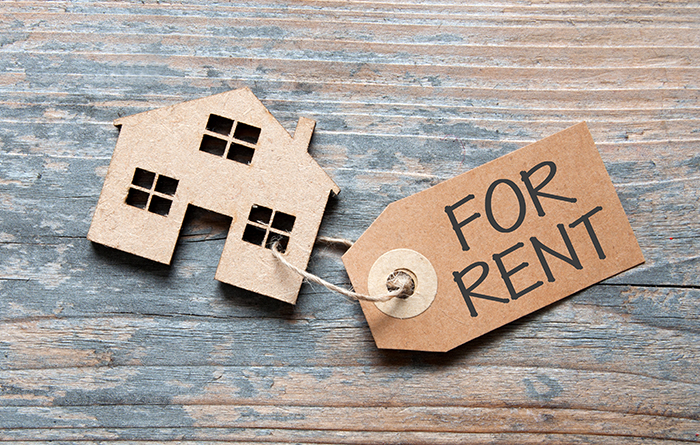
The Grenfell fire tragedy of June 2017, in which 72 people died, has highlighted fire safety issues with thousands of blocks of flats, exposed decades of lax building controls, and shone a light on a construction sector that focused on building properties fast and cheap.
The fire spread quickly due to the flammable cladding covering the building. Since then, mortgage lenders have been cautious about lending on flats in tower blocks, especially where the building is covered in cladding.
Their concerns led to UK Finance, the Building Societies Association and the Royal Institution of Chartered Surveyors collaborating to create the External Wall Survey – EWS1 – in December 2019.
The EWS1 was initially recommended for residential blocks with a height of 18 metres (about seven storeys) or above. A survey for each building needs to be arranged with permission of the freeholder, often via managing agents. The aim is to assess whether a block has been built using combustible materials for cladding or insulation.
Once the survey is complete, the block can be issued with a completed EWS1 form, which will confirm that the building is safe or highlight any remedial work that needs to be done.
SPF Private Clients chief executive Mark Harris says many lenders are demanding to see a completed EWS1 form before approving a mortgage or remortgage application.
“Those where it is not compulsory will typically require the building owner and/or its agent, as the ‘responsible person’ under the Regulatory Reform (Fire Safety) Order 2005, to produce a written statement to confirm that the cladding system(s) (both ACM and non-ACM materials) for the subject property meets the requirements of the current guidance from the Ministry of Housing, Communities and Local Government,” he explains.
“The statement must be prepared by a suitably qualified independent professional advisor who is a member of one of the professional bodies listed by the MHCLG in Information Note 1 (or any subsequent list),” he adds.
Issues with EWS1 forms
While a widely recognised survey looking at cladding and fire safety might sound a sensible approach, there are numerous stumbling blocks in the EWS1 process that are causing headaches for flat-owners.
Your Mortgage Decisions director Dominic Lipnicki says: “Advisers are seeing real issues in being able to help clients whose properties require a EWS1 form.
“We have seen lenders refusing to consider offering a mortgage without seeing the form, while the leaseholders are desperately trying to put pressure on the freeholders to pay for the inspection, which can involve much scaffolding and drilling into the cladding, and therefore is often unaffordable for the freeholders.
“Even when affordable, the inspection and certification can take a long time to arrange, leaving homeowners stranded. We have all heard of ‘mortgage prisoners’. I really think we now have ‘cladding prisoners’, who are unable to remortgage or sell their properties, and the government has done little to change the situation.”
A big issue is the lack of surveyors with the appropriate qualifications to complete an EWS1 survey. According to The Times, only 291 fire engineers are qualified to inspect buildings. One housing association, Peabody, has told leaseholders it could be a decade before all its blocks have an EWS1 survey carried out.
To make things even worse, the government tightened safety advice in January, leading to lenders routinely demanding evidence that almost any modern flat is safe, even in smaller three-storey brick buildings. Those with any hint of cladding – such as timber around or between balconies – are now coming under scrutiny.
Cladding costs
The cost for remedial work currently falls to leaseholders – and the sums involved can be astronomical.
For example, flat-owners in Connect House in Manchester, which comprises of 46 flats, have been billed up to £115,000 each to remove unsafe cladding from their building.
The cost is simply unaffordable for most people – and unfair too. Leaseholders say they bought their homes in good faith and blame developers for not making them fire safe. In turn, developers claim they built the properties in accordance with the building regulations and planning laws at the time – and blame the government.
Back in March, chancellor Rishi Sunak announced a £1bn fund to remove cladding from unsafe buildings over 18 metres tall. But this won’t cover all the work needed, nor the thousands of pounds many leaseholders are currently being charged for so-called waking watches. Crucially, freeholders, not leaseholders themselves, need to apply for money from the fund.
The Association of Residential Managing Agents puts the total cost of remedial work for every affected building at about £4.4bn – more than four times the money available.
‘Nightmare situation’
Many block residents are still in the dark about what remedial work their building needs and how much it will cost.
John Charcol product technical manager Nicholas Morrey says: “For housing associations or developers, the block a particular consumer may own is one that is down a long list of properties due for inspection and those parties will not prioritise them. So the leaseholders there have to either wait possibly months or a year or commission one themselves from their own funds – and hope that their property is deemed safe.
“It is a significant problem as every block above 18 metres needs one and there are simply not enough accredited fire safety people to do them.
“Plus, sometimes the substance behind the cladding needs to be sent away for testing to ascertain the fire-retardant nature – and that takes time and money.”
Trinity Financial product and communications director Aaron Strutt describes the EWS1 situation as a nightmare with no real end in sight.
“We are getting more calls from estate agents asking if the flats they are selling are likely to need a report and if there is any chance of getting a mortgage on the properties.
“We also speak to a lot of upset flat-owners who can’t sell their homes,” he says. “There is more of a realisation that without the report there are likely to be delays and a limited chance of getting a mortgage.”
There is a human cost to the cladding situation too. Leaseholders unable to sell their homes report increased mental health issues, with the situation intensifying during lockdown when they were ordered to stay inside their potentially unsafe homes. Many report having to put life plans, such as marriage, having children, relocating for work, travelling or retiring, on hold indefinitely.
Jennifer Reid is a leaseholder and one of the founders of the Birmingham Leaseholder Action Group.
She says: “I am lucky to have a proactive Right to Manage board of directors, who, after Grenfell, decided to get a survey done. Sadly, our building failed.
“We know of other buildings where leaseholders are struggling to find out when their building will be surveyed. We have heard of leaseholders finding out from estate agents (when they tried to sell) that their building failed the EWS1 survey – instead of finding out from their managing agents.
“These surveys cost a lot of money too – tens of thousands of pounds for desk research and intrusive surveys in most cases. In addition, there are not enough chartered surveyors to carry them out. ARMA quoted on average a six- to 12-month waiting list, and for lower-risk buildings (under 18 metres) we have heard of waiting lists up to 10 years.”
Pressure on government
The Birmingham Leaseholder Action Group is one of a number of campaign groups set up to put pressure on those responsible for trapping leaseholders in unsafe buildings. Others include the UK Cladding Action Group and Manchester Cladiators.
The Leasehold Knowledge Partnership, a registered charity and the secretariat of the All Party Parliamentary Group on Leasehold and Commonhold Reform, is also heavily involved.
According to a survey by the Leasehold Knowledge Partnership, 2.8 million flats need EWS1 reports and are unlikely to sell without one. Worse still, many will not be sellable when they finally get one due to cladding and other fire safety issues.
Rics, for its part in the saga, says the EWS1 form is not the problem – it’s the fact that lenders feel they can no longer rely on building regulations set out by the government.
As it stands, pressure is piling up on the Ministry of Housing, Communities and Local Government, and housing minister Robert Jenrick in particular, to take decisive action to sort out the cladding scandal.
But many say the government continues to deny the scale of the problem with ministers refusing to engage with affected leaseholders or journalists on the matter. Public Accounts Committee chair Meg Hillier has ordered the MHCLG to “put a stop to the bickering” and end the “misery and uncertainty” facing thousands of leaseholders in unsafe apartment buildings.
Reid, meanwhile, is succinct about what should be done. “Fire won’t wait,” she says.
“The government should urgently and accurately identify the risk for all affected buildings and fund both interim measures and remediation costs, and then recoup the costs from those responsible – developers, contractors, suppliers, regulators and freeholders.”



